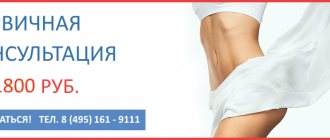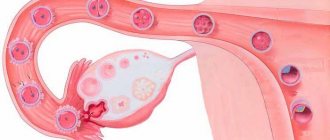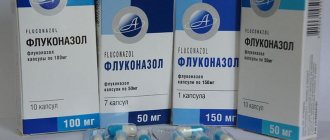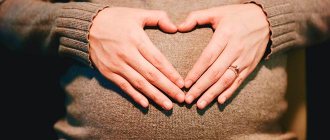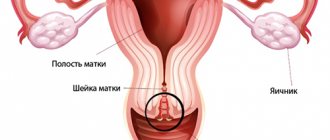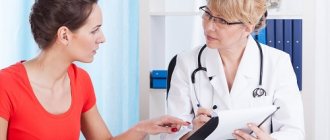Until recently, most doctors advised women suffering from endometriosis to limit themselves to sports. In the course of research, it was found that physical exercise for endometriosis can benefit the female body if chosen correctly. The problem should be approached with caution, taking into account contraindications.
Why do prohibitions arise?
Endometriosis is a mysterious disease. Doctors do not fully know why it occurs, how it develops and what influences its course. It is only known that with endometriosis, the cells of the mucous layer of the uterus grow outside of it - in the ovaries and fallopian tubes, on the peritoneum, in the intestines, mammary glands, and skin. Such foci are called heterotopias. They can be detected anywhere - in almost any organ.
It is assumed that heterotopias arise under the influence of such factors:
- Hormonal imbalance. The development of endometriosis is to blame for the increased synthesis of estrogen against the background of a relative deficiency of progesterone;
- Immunological failure. An imbalance of the T- and B-links of immunity leads to the suppression of apoptosis - programmed cell death. They continue to grow uncontrollably and lead to the appearance of lesions;
- Injuries and operations on the uterus. Violation of tissue integrity leads to the fact that endometrial cells fall outside the reproductive organ and grow into the surrounding space. The risk of developing the disease is also high after undergoing abortions - curettage of the uterine cavity;
- Reflux of menstrual blood. It is assumed that the reverse reflux of blood leads to the sedimentation of endometrial cells in the fallopian tubes and on the ovaries.
It is believed that one of the causes of endometriosis is retrograde menstruation.
To suppress the growth of lesions, doctors try to influence the causes of their appearance - and prescribe hormones, immunostimulants, and anti-inflammatory drugs. But it is important not only to remove heterotopias, but also to prevent their re-growth. Therefore, certain restrictions arise related to lifestyle, nutrition, and physical activity.
What should be done:
- Do not allow a significant increase in blood flow in the pelvic organs. It is assumed that with an active blood supply, heterotopias grow;
- Do not artificially increase the synthesis of estrogen - exclude factors that increase the level of the hormone;
- Maintain the harmonious functioning of the immune system - eliminate factors that disrupt natural cell death;
- Alleviate the symptoms of the disease - reduce pain, normalize the menstrual cycle.
It is not known for certain whether lifestyle changes actually have a beneficial effect on the course of endometriosis. There have been no serious studies on this issue. Doctors don’t know whether, for example, avoiding saunas and steam baths will help suppress the growth of lesions or whether there is no point in limiting yourself. You can only rely on accumulated experience and exclude those factors that clearly negatively affect the course of the disease.
If you continue to lead your usual lifestyle, the risk of developing complications increases:
- Uterine bleeding due to adenomyosis;
- Menstrual irregularities – painful and heavy periods;
- Iron deficiency anemia due to blood loss;
- Torsion or rupture of an endometrioid ovarian cyst;
One of the complications of untreated endometriosis can be rupture of an endometrioid cyst.
- Adhesive process in the pelvic cavity with endometriosis of the fallopian tubes, ovaries, peritoneum, retrocervical space;
- Deformation of the cervix when it is damaged;
- Infertility due to adhesions, decreased ovarian reserve, and immunological disorders.
With endometriosis, it is better not to take risks. Many women note that when they change their lifestyle, the disease progresses more easily and pain occurs less often. On the contrary, if restrictions are not followed, the condition progressively worsens.
Let's take a closer look at what is possible and what is not possible with endometriosis.
Chronic adnexitis: some statistics
The risk of fetal loss during pregnancy is especially high if a woman has such a disease and it suddenly worsens. It is almost never possible to save a pregnancy: the patient’s well-being during an exacerbation of chronic adnexitis is very severe, with a high temperature, and the prescribed antibacterial treatment always has a detrimental effect on the development of the fetus. These are very difficult drugs, even a healthy, adult and strong body can suffer quite significantly from it. And of course, under no circumstances should a pregnant woman treat inflammation of the appendages with heating instead of medications. Firstly, the fetus suffers even more, and secondly, the inflammatory process develops even more actively. Since chronic adnexitis appears mainly in women of childbearing age - from twenty to forty years old most often, the percentage of lost pregnancies due to this disease is very, very high.
In twenty-five percent of cases, this disease affects women who use an intrauterine device. Eighty-five percent of cases of chronic inflammation of the appendages in women transition from acute to chronic. Every fifth of those affected becomes infertile. And all because doctors cannot convey to the female population such a simple fact that chronic adnexitis is an infectious inflammatory process that cannot be cured by any heating. Probably, we need to conduct a general educational program and start introducing knowledge to girls right at school. Judging by statistics, the percentage of people who develop one or another form of inflammation of the appendages, despite minor fluctuations from year to year, always remains simply monstrous - up to sixty percent of women of childbearing age have acquired such a disease, and this is the minimum mark over the years.
It is necessary to understand that the acute state of the disease can only be treated in a hospital with medication, and not at home with a heating pad and a hot bath. But even today, women prefer treating inflammation of the appendages with folk remedies, thereby certainly driving the disease deep inside, into a chronic underground, from where various sabotages are committed in the body. Pathogenic bacteria from warming begin to multiply much more rapidly, affecting other nearby organs, and in the acute stage and during a purulent inflammatory process, entire body systems can be affected. Doctors allow warming only for chronic inflammation of the appendages, when remission occurs, there is no acute pain and the infection has almost been defeated with antibacterial drugs.
Exercise for endometriosis
There is no complete ban on sports. On the contrary, adequate physical activity will benefit a woman:
- Exercising reduces weight and eliminates excess fat tissue. Fat is a natural depot of estrogen. Sex hormones accumulate in adipose tissue, which means they increase the growth of heterotopias and lead to the progression of the disease;
- Reasonable physical activity strengthens muscles and ligaments and prevents blood stagnation in the pelvic organs. Many women note that with regular exercise, pain decreases and the menstrual cycle becomes stable;
- Sports activities have a beneficial effect on the nervous system. It is known that progressive endometriosis often leads to depression. Regular physical activity improves mood, gives strength and helps fight emotional disorders;
- Physical activity strengthens the immune system. If the immune system works smoothly, the risk of developing the disease is lower.
For endometriosis, the following are allowed:
- Hiking. The distance is not limited, but you need to consider your own resources. Overload with endometriosis is undesirable;
- Easy jogging. A gentle daily run won't hurt. It is worth sticking to a certain schedule - this way the body will quickly get used to the load;
For endometriosis, light, quiet running is allowed.
- Swimming. When choosing a pool or body of water, avoid sudden temperature changes - they disrupt blood flow in the pelvic cavity and worsen the course of the disease;
- Yoga. During classes, you need to exclude asanas that place stress on the abdominal and pelvic muscles. Other elements of yoga are allowed;
- Pilates. The restrictions here are the same as when doing yoga - do not overexert yourself and exclude exercises on the muscles of the back and abdomen;
- Physiotherapy. The doctor selects exercises based on the patient’s chronic diseases. He will exclude what is dangerous with endometriosis and focus on other muscle groups;
- Breathing exercises. The main thing is not to overexert your abdominal muscles.
It is important to know
You should not exercise during menstruation. Active exercises increase blood flow and can lead to its backflow - and hence the appearance of new lesions in the pelvic cavity.
Allowed with caution:
- Cycling and exercise on an exercise bike. These sports involve stress on the abdominal and back muscles. Increasing blood flow in this area is not recommended. If cycling is a significant part of your life, be careful: ride 1-2 times a week and for short distances;
- Gymnastics. It is necessary to exclude exercises that place stress on the abdominal muscles, back, and hips. High and long jumps, twirling a hoop, and push-ups are not recommended for endometriosis;
Physical activity on the abdominal muscles is not recommended for a woman with endometriosis.
- Belly dance, tribal dance. Prolonged and severe stress on the abs is dangerous;
- Horseback riding. With widespread endometriosis, only short rides on horseback are allowed;
- Strength fitness training. Use caution with all weight loss exercises. You can’t pump up your abs, do push-ups, or do planks;
- Kegel exercises. Gymnastics for intimate muscles increases blood supply to the genital organs and can provoke the growth of lesions.
It is also useful to read: Specifics of abdominal endometriosis
There is no categorical ban on any sport. You need to focus on your well-being, localization and extent of the process, and take into account ultrasound data and age. If you play sports, do not forget to visit your doctor regularly - undergo an annual examination, do an ultrasound, and monitor the growth of lesions.
“I thought I was in hell”: How I live with endometriosis
The inner layer of the uterus is called the endometrium - it is where the egg is attached after fertilization, and it is renewed once a month during menstruation. Sometimes endometrial cells begin to behave incorrectly and invade new territories where they do not belong. They can gain a foothold anywhere - create obstruction of the fallopian tubes, grow around some vessels in the abdominal cavity, or, for example, gain a foothold in the lacrimal gland; wherever they are, they continue to behave as if they were still in the uterus, and once a month they will renew themselves, which means they will bleed. Sometimes these cells grow inside the muscle layer of the uterus - this is called adenomyosis. A kind of capsule with endometrial cells appears inside the muscle tissue, which at some point begins to bleed. A cavity with blood appears inside the muscle, from where there is no exit, and sooner or later the inflammatory process begins.
No one knows why this happens: there are tests for genetic predisposition, but the risk group includes all women living active lives in big cities. Endometriosis can be called a common disease: according to some data, every tenth woman has it; this means that if a gynecologist sees ten patients a day, he may encounter this disease every day. However, it is not always possible to make a diagnosis immediately - sometimes this is preceded by years of treatment for non-existent diseases and even surgery. Katya Dolinina told how she lives with endometriosis and what difficulties she had to go through.
I am twenty-five years old, by first education I am a fashion designer, and now I am finishing my master’s degree in film criticism and theory. About five years ago, I opened a clothing brand with my boyfriend, but both the business and the relationship fizzled out. Now I’m writing a dissertation on Iranian cinema, I teach a lot (I’m a private teacher of painting and drawing) and for now I’m not making any plans beyond my defense. When I was a teenager, I was hospitalized a couple of times with stomach pain, but they released me after a few days without finding any explanation. The older I got, the more often this happened. Once every couple of months I could wake up from a dull nagging pain, get up, take a pill and go to bed. For some reason, during the day I forgot about it and, until the pain became regular and began to take over the daylight hours, I did not see a doctor. I came to the gynecologist with this problem at nineteen - and only five years later I received the long-awaited piece of paper with my real diagnosis.
The first gynecologist said that I have uterine fibroids, even two - but fibroids cannot hurt. The doctor added that it is normal for a woman to endure pain, and advised her to drink some herbs like “red brush”. I didn’t drink the herbs, but continued to endure the pain. Once every couple of months I did an ultrasound, every ultrasound specialist said that it looked very strange and actually looked like a capsule with fluid inside the uterine muscle, but this could not be - in fact, of course, it was a capsule with fluid inside the muscle . The pain intensified, I drank more and more painkillers. At some point, I caught myself that if I left the house without pills, I started to panic - and I would rather run to the pharmacy. In my memories of that time, pain is permanently present. I could sit at a meeting with friends, an art class or an English course and just sway from side to side, trying to maintain an adequate appearance. I answered slowly, couldn’t concentrate on anything and didn’t understand what to do - after all, the doctor said that I was fine.
The doctor added that it is normal for a woman to endure pain, and advised her to drink some herbs like “red brush”
In parallel with this, I began to have problems with the immune system: in six months there were more than ten episodes of hidradenitis (inflammation of the sweat glands in the armpit), each of which ended in surgery and a series of painful dressings. I became allergic to some of the patches and left marks like burns. When my stomach didn’t hurt, they cut my armpits, and vice versa. Added to this was constant fever and antibiotics. The surgeons joked that I needed to bathe in alcohol and change my razor, but it seemed to me that I was in hell. Every time, realizing that it was starting again, I just cried. The immunologist I eventually saw was so impressed by my medical history and my exhausted appearance that without any tests she prescribed a course of immunomodulation - after which the battle with inflammation was over. The immune problems subsequently returned, and I took two or three more such courses. These problems are a consequence of adenomyosis: a chronic inflammatory process inside the body causes the immune system to work hard.
My parents didn’t really delve into this story, they told me to go to the doctor if something hurts - and if the doctor said that everything was fine, then it was. In the summer after my fourth year, I promised my parents to go by car to my grandmother, and this is a two-day journey from St. Petersburg. Before that trip, they only knew about pain from my words in the format “my stomach hurt again” - and this was the first time they saw me turn pale, break out in a cold sweat, cry quietly and throw myself on pills. Only after this did my family begin to take the problem seriously; when we returned, I went to the doctors who were recommended to my parents, and from there I got to my surgeon. When I went in for surgery, I had three or four mutually exclusive diagnoses from different specialists. The doctor said that it doesn’t matter what’s there anymore—it needs to be removed.
At the age of 21 I had my first operation, and it was one of the happiest moments of my life. I started taking light hormones, and a new life without pain began. I led an active lifestyle; in addition to my studies and work as a tutor, I added three training sessions a week, English courses, and then also business courses. After a couple of months, my stomach started to feel tight again. During a routine examination, the ultrasound specialist named one of the diagnoses that I had been given before, and I realized that everything had come back. A week or two later I was operated on again. I joked that this was a unique opportunity for rehabilitation for my boyfriend and friends who did not come to the hospital the first time. After both operations, histologists who examine tissue samples under a microscope wrote that I had leiomyoma (a benign tumor), but there was not a word about endometriosis. Nevertheless, the doctor who operated on me prescribed a drug to treat endometriosis - after all, she saw with her own eyes what was inside me.
Everything was fine with this drug - except that it is very powerful and has a lot of side effects, and it is usually prescribed for several months. Essentially, it puts the body into an artificial menopause. I took the medicine for a year and felt great, but because of the risks associated with it, I was told to stop taking it. Within a month, I realized that something had changed inside, I went for an ultrasound and saw new nodes on the screen. This was a couple of months before the defense of my thesis collection. For almost a month I lay at home and cried. I don’t remember what pulled me out of that state then, I remember that I read the book “Depression is Canceled” and forced myself to leave the house. It seemed that the world had closed in, there was nothing to breathe. Then something clicked in my head, and I looked at the situation from the outside. Then we broke up with the young man, I stopped crying and was able to finish the collection and get a diploma.
Thermal procedures: bath, sauna, solarium
Most gynecologists do not advise their patients to undergo thermal procedures. There are explanations for this:
- In warmth, blood flow increases, and the pelvic organs are no exception. Conditions appear for the spread and growth of endometriosis foci. Women with concomitant pathology should be especially careful - in the presence of fibroids or endometrial hyperplasia;
- Thermal procedures increase blood flow. Many women note the appearance of bloody discharge after a visit to the sauna. Menstruation becomes more abundant and longer;
- In warmth, the pain usually subsides, but after a change in temperature it returns with the same intensity. Many women note that after a short-term improvement in the sauna, the condition worsens.
All of the above applies to any thermal procedures - sauna (including infrared), bath, solarium. Against the background of endometriosis, it is also not recommended:
- Take a hot bath - more than 37 degrees;
- Stand for a long time under a hot shower;
- Steam your feet or take a hot foot bath;
If you have endometriosis, you should not hover your legs.
- Wearing clothes that are too warm is inappropriate for the season.
Hypothermia will also not be beneficial for endometriosis. Firstly, the risk of colds increases, which means that the immune system will be suppressed. Secondly, sudden temperature changes negatively affect blood flow. Do not increase the load on the blood vessels. Do not take a contrast shower, dress appropriately for the weather, do not swim in ice water and take care of your health.
On a note
There is no strict ban on hardening. But don't start right away with dousing yourself with ice water. Introduce low temperatures gradually - let the body get used to the new conditions. Monitor your well-being - there should be no unpleasant sensations during hardening. If the pain intensifies or the volume of menstrual flow increases, stop the procedures and consult a doctor.
Where to buy a belt for the prevention of acute conditions of chronic adnexitis
All you need to do is buy a wool belt that covers this problem area and wear it in cold weather. It's thin, you can't see it under clothes, and it won't ruin your figure. For patients, doctors recommend the camel medical belt “LEONARDA”, which is sold in pharmacies in Russia, and you can order it on Apteka.ru. The website is very convenient: the buyer can choose any pharmacy in the country, where free delivery will be made. The products have long been known, since the company has been cooperating with pharmacy chains for many years, the quality of the products does not leave much to be desired, which is confirmed by all the necessary documents. Doctors know this very well, which is why they advise patients to purchase medical products only in pharmacies, since in any other place you can get a product of poor quality, and therefore useless.
When the acute condition of chronic adnexitis is stopped, the patient will have to attend various procedures in the physiotherapy room, massages, and warming up. After each session, you need to retain the heat received from this event for as long as possible. The camel medical belt “LEONARD” will cope with this task. And something bought in an unknown online store or on the market may well fail, although the sellers probably positioned it as therapeutic and preventive. A medical product must have a registration certificate from Roszdravnadzor; without this document, selling consumer goods as medical products is prohibited by law.
However, laws are violated, and consumers are often deceived. And the deception is revealed precisely at the moment when there is a non-illusory danger of causing irreparable harm to health. A sharp change in temperature after warming up in the physiotherapy room threatens a relapse of acute adnexitis, when you will again have to be treated with antibacterial drugs that are very harmful to the body. It would seem that the patient had thought of everything, bought a belt, the price was even higher than in the pharmacy. But it’s only called wool, it doesn’t actually retain heat. This means that the procedure was carried out in vain, and the entire treatment of inflammation of the appendages may fail.
That is why doctors warn that the therapeutic belt must be of high quality and recommend thoroughly tested products. Indeed, yarn and elastic fabric “LEONARDA” received special patents - No. 2289643, No. 2319800, respectively, and finished products from them have a registration certificate of Roszdravnadzor No. FSR 2010/08307, which confirms their medical purpose. Many manufacturers consider it correct to call products that have received certificates from the SES or Rostest medicinal, but this is not so. These respected organizations do not have the right to assign a therapeutic or preventive purpose to a consumer product. They do not carry out the necessary checks and tests for this. The medical purpose of the product can only be confirmed by the registration certificate of Roszdravnadzor.
And it passed all tests with honor, its products are rightfully considered to be of medical purpose, therapeutic and preventive. These products have all the specified technical characteristics, as well as a proven therapeutic effect. It must be said that untested products that do not have a medical purpose and cannot be sold in Russian pharmacies. Therefore, if you need to buy a therapeutic belt for the lower back in order to keep warm after various physical procedures, you need to listen to the doctor and buy products from LEONARDA-SERVICE LLC. Only in this case can we hope for recovery.
Work and rest with endometriosis
When choosing a profession, it is worth considering some restrictions:
- Heavy physical work, heavy lifting, etc. are not recommended;
- Do not work in a hot or too cold room;
High temperatures in the workplace can aggravate the disease.
- If you have a shift schedule, if possible, you should not work during menstruation.
It is better to relax with endometriosis in a temperate climate. Vacations in hot countries will not be beneficial - overheating is dangerous. But if you only like a beach holiday and want to go to the sea, you need to be careful:
- Do not stay in direct sunlight for a long time;
- Do not sunbathe on the beach during peak solar activity - from 11 a.m. to 4 p.m.;
- Choose comfortable, lightweight clothes in light colors made from natural fabrics (linen, cotton) - in them the skin breathes and the body does not overheat;
- Plan rest in the first half of the cycle - after the end of menstruation.
There is no categorical ban on tanning, but it is better not to risk it.
On a note
Many experts believe that endometriosis is a disease of active business women. Serious workload, constant stress, frequent business trips - all this leads to hormonal imbalance and immunological disorders. If you are diagnosed with endometriosis, you should choose a quieter job - without stress and overexertion.
Body care: massage, beauty treatments
For endometriosis it is not recommended:
- Massage of the lumbar region, buttocks, thighs, abdomen;
- Intensive anti-cellulite massage;
- LPG massage affecting the lower abdomen;
- Vacuum massage, as it involves heating the tissues.
If you have endometriosis, you should not attend vacuum massage sessions.
Gynecological massage raises many questions. It is often prescribed for menstrual irregularities, adhesions, and in the postoperative period. This massage is usually not done for endometriosis. Increased blood flow in the pelvic cavity provokes the growth of lesions.
There is no exact data on whether laser hair removal can be done for endometriosis. Most doctors do not recommend epilation of the bikini area. You can remove hair in the armpit area and on the legs.
With endometriosis, special attention is paid to intimate hygiene. It is not recommended to use tampons - there is an opinion that they provoke retrograde blood flow and lead to the spread of heterotopias. Many women note that the pain increases with tampons. Alternatively, you can use absorbent pads and a menstrual cup.
It is also useful to read: The use of suppositories in the treatment of endometriosis
Nutrition for endometriosis
Diet will not cure endometriosis, but it will help alleviate symptoms and slow the progression of the disease. It is recommended to adhere to the following rules:
- Meals should be frequent, fractional - in small portions 5-6 times a day. Do not overload the digestive tract;
- From the diet you need to exclude foods that increase the production of estrogen: legumes, nuts and seeds (including flax seeds), white cabbage, mushrooms, seafood. It is necessary to limit the consumption of vegetable oil, dairy products, some fruits (peaches, apricots);
- Alcohol is prohibited, especially beer - it is rich in phytoestrogens. Sometimes you can afford good wine;
- It is not recommended to drink coffee - it increases estrogen production and changes tissue sensitivity. Many women note that frequent drinking of coffee increases pain during menstruation and on other days of the cycle. Don’t get carried away with strong tea and cocoa;
- It is worth adding foods that suppress the production of prostaglandins to your diet. If prostaglandin synthesis is reduced, pain decreases. This is primarily fish, fresh vegetables and fruits, and grain crops.
With endometriosis, a woman’s menu must include fresh vegetables and fruits, excluding those foods that increase the production of estrogen.
The goal of nutrition for endometriosis is to eliminate estrogen-producing foods and prevent weight gain. But you shouldn’t get carried away with strict diets. It is better to seek help from a nutritionist. The doctor will select an appropriate diet and help cope with the symptoms of the disease.
Intimate life, pregnancy and childbirth
Sex with endometriosis is not prohibited, but many women refuse intimacy. The reasons are various:
- Dyspareunia is pain during sexual intercourse. Unpleasant sensations arise against the background of different localization of the process. Most often, lesions are detected in the retrocervical space, on the pelvic ligaments and sheets of the peritoneum. Less commonly, the cause of dyspareunia is an endometrioid ovarian cyst, adenomyosis, or cervical pathology. The pain syndrome is especially pronounced in the second half of the cycle and before menstruation;
- Bloody vaginal discharge. Frequent bleeding does not inspire intimacy. If the bleeding is constant, the woman completely refuses sex;
- Decreased libido. It is not known exactly why sexual desire decreases with endometriosis. Many doctors believe that this is a psychological problem. You don’t want intimacy if you have pain, bleeding or other symptoms of illness.
There is no prohibition on sexual activity, but you need to be careful:
- Intimacy can be unpleasant in the second half of the cycle;
- Sexual intercourse can cause a large ovarian cyst to rupture, especially during ovulation;
- Sex can cause contact bleeding in case of endometriosis of the cervix and vagina;
- You should not have sex during menstruation - this provokes reverse blood flow and progression of the disease.
Intimacy during menstruation can cause reflux of menstrual blood.
Pregnancy with endometriosis is possible if:
- The uterus - the place where the fetus will develop - is not affected or there are minor lesions in it;
- There are no large (more than 3 cm) cysts in the ovaries. The ovarian reserve is preserved - the follicles regularly mature, ovulation begins;
- There is no pronounced adhesive process in the pelvic cavity. The fallopian tubes are passable - the egg can meet the sperm, the fertilized egg can pass into the uterine cavity;
- The cervix is not deformed by foci of endometriosis;
- There are no obvious foci of endometriosis on the scar after a previous cesarean section.
With moderately severe endometriosis, spontaneous conception of a child is possible. Pregnancy has a beneficial effect on the course of the disease. While a woman is carrying a child, the lesions do not grow and the process does not progress. The positive effect lasts as long as there is no menstruation. The longer a woman feeds her baby with breast milk, the longer this period lasts.
In cases of severe endometriosis, the pathological lesions must first be removed. Hormonal drugs are prescribed - they suppress the growth of heterotopias and prevent their growth into the depths of the tissues. The effect is temporary - after stopping the medication, the lesions may grow again. For some forms of endometriosis, surgical treatment is practiced - for example, removal of nodes in the uterus, excision of an ovarian cyst, cauterization of pinpoint lesions on the peritoneum.
Endometriosis often leads to infertility. Due to the disease, the ovarian reserve decreases, and follicles do not form in the ovaries. An adhesive process develops, and the fallopian tubes become obstructed. IVF will help in this situation.
In vitro fertilization can help a woman with infertility due to endometriosis become a mother.
Possible complications
Overheating the body in a bathhouse can become an impetus for the further development of endometriosis. The progression of the disease is expressed in the growth of foci and penetration into surrounding tissues, their subsequent destruction. Polyps and growths form.
- pain increases;
- bleeding increases;
- endometriotic formations increase in size over time, creating scars, adhesions or cysts.
After confirming the diagnosis, it is important to follow the doctor’s instructions and take into account the ban on thermal procedures. A responsible approach to treatment will help stop the progression of the disease.
Be careful, medications!
For endometriosis it is not recommended:
- Take estrogen-based medications. This hormone provokes the growth of new lesions and leads to the proliferation of altered tissues. Estrogens are included in hormone replacement therapy products, including for menopause. They are included in some local probiotic preparations - for example, Gynoflor E. The exception is combined oral contraceptives - they contain estrogen along with gestagen, and their action is balanced;
- Drink preparations based on phytoestrogens. These are many drugs for women in menopause, dietary supplements, etc. Long-term use of such drugs can provoke the growth of lesions;
- Take some medicinal herbs: hogweed, red brush, celandine, sage, etc. They contain plant estrogens and are undesirable for endometriosis;
- Undergo physiotherapy, which involves heating the tissues. It is believed that this may cause the growth of new lesions.
It is important to know
Traditional medicine does not allow you to completely get rid of endometriosis. They do not affect the growth of lesions, but only relieve the symptoms of the disease.
The negative effects of medications are not always obvious. If in doubt, you should consult your doctor.
There are still many uncertainties regarding endometriosis. Doctors were unable to come to a consensus and say for sure what should not be done with this disease. But while scientists are arguing, it is better for patients not to take risks. There is no need to completely give up sports, radically change your diet, or go to the beach only after sunset. Remember reasonable restrictions and match them with your rhythm of life.
Useful video about how lifestyle affects the occurrence and development of endometriosis
- What kind of life should such a woman lead?
— An active lifestyle can greatly alleviate the condition. Avoid stress, spend more time in the fresh air. Healthy and long sleep is very important. On average, the body needs 8-9 hours per day to fully recover. Exercise lowers estrogen levels and may slow the growth of endometriosis.
It is better to start with simple exercises, as excessive exercise will only increase the pain. Don't neglect your regular morning exercises. It improves blood circulation, breathing and brings the body into a state of wakefulness. You can add static and dynamic exercises to it. Here is an example complex:
1st element - walking in place at a calm pace for 1 - 2 minutes. Element 2 - walking in a cross step and walking in a half-squat. Element 3 - from the knee-elbow position, lift your pelvis up as much as possible, standing on your toes and straightening your legs at the knees, while resting on your elbows. The exercise is performed 8 - 10 times. 4th element - in a sitting position, bring your legs together and spread them several times. 5th element - squat down from a standing position, simultaneously stretching your arms forward. Breathing should be uniform.
In conclusion, one of the most accessible types of aerobics is recommended as a general strengthening effect - running in place. The degree of load is monitored by pulse. When running, it should be equal to 180 minus your age in years. After 5 minutes, the pulse should not exceed 120 beats per minute, and after 10 minutes it should not exceed 100 beats. Running duration is 7-10 minutes.
For static exercises, “inverted” poses are suitable. For example, throwing your legs behind your head while lying on the floor. At the same time, blood flow to the brain increases and nutrition of the departments responsible for hormonal regulation improves. Such training, together with a positive attitude, helps overcome the disease.
